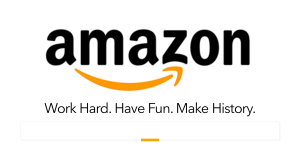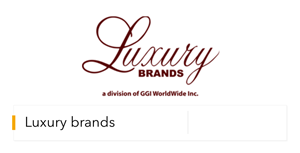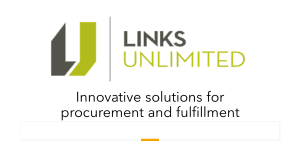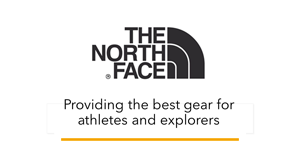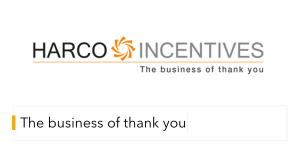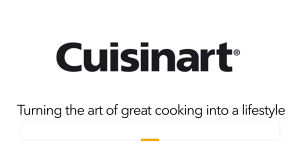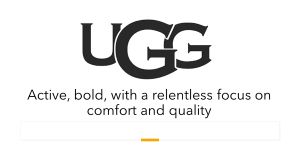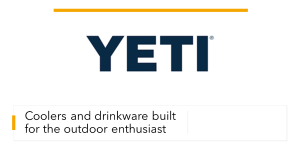Citizen Veteran Says Industry Needs to Educate the Market
Citizen sees a timeless role for watches and clocks in programs and believes the industry’s full potential will not be realized until more businesspeople are aware that the Special Markets channel exists.
Richard Low, Citizen Watch Company’s Vice President of Special Markets, has served at the front lines of the rewards and recognition field for years, both as an executive in special markets and in a leadership roles with the Incentive Marketing Association as President and Summit Chair. RRN caught up with Low to get his views of the marketplace and the role of timepieces.
Based on his many years in the industry, Low believes that the biggest opportunity for the rewards & recognition market is to do a better job of educating the business world about the existence and benefits of the special markets channel. “While many of the largest companies are aware they can buy rewards at wholesale through our channel, most companies have little knowledge about our field and the expertise we can provide,” he says. “When I hear people say they can get better pricing online, I always ask if their calculation includes the expertise of trained professionals to address the many challenges that can occur in a program or the services that can make it stand out in the hearts and minds of the recipients.”
A Need to Reach the General Business Media

Low, who has earned the IMA’s Certified Profession of Incentive Management (CPIM) designation, believes that all the industry research over the last decade or more about effective program design and the reward experience only underlines the need to work with experts. While he believes the research and ISO 10018 and other standards are helping the industry by promoting best practices and better results, he adds “I don’t believe we can ever reach our true potential until the national business media wakes up to this ‘people’ approach to business and our role in it.”
Moving to the timepiece category, RNN asked Low how he believes clocks and watches fit into today’s reward and recognition efforts versus practices in the past. “Time is a very important element within any organization, especially those that reward tenure,” he explains. “What better way to commemorate length of service and commitment than rewarding a valued employee with a watch, a symbol of time? Service anniversaries along the way can also be recognized with clocks, another item that recognizes time. Watches and clocks are used much the same way now as they were 10, 15, or 20 years ago. Watches will always be used to recognize time dedicated to an organization.”
So what are the types of time pieces most popular today in corporate applications in terms of categories and styles? “Watches have really changed a lot in the last 20 years,” Low says. “Now, they’re regarded as an accessory as much as a functional or wardrobe requirement. Most women and men have multiple timepieces to fit different dress needs and events. It’s likely that someone may choose one look for a workday, another for a casual day and one for an evening out. Timepieces are a functional accessory, and it’s easy to match it to an outfit.”
Watches Stand the Test of Time

Low goes on to explain: “After the hoopla fades, which we already see happening, smartphones and watches will not replace timepieces. Just look at the generations. Boomers wear watches. Millennials grew up with smartphones as novelties. For the generation behind them, timepieces are the novelty. I’ve seen many more in the 16-25 age group seek out watches as accessories. This group is going to be the growth watch market for the next 10 years.”
He adds that the right timepiece selection is based on a program’s demographics and price points. “We know that brand is a driving force in participant reward selection. Those responsible for merchandise selection should rely on their watch vendor to help them with the timepiece that fits each category need. Which brand is resonating best at retail in each category? Program participants are consumers, influenced by the same factors. For instance, a brand like Citizen, with Eco-Drive technology powered by light and never needing a battery, appeals to a very wide demographic, which is apparent by our market share leadership in mid-priced luxury.” When designing a program around time pieces, Low says, it’s always important to realistically address the price point, “then look at gender and the occasion that’s being celebrated or recognized. This will quickly narrow down the selection.”
He notes that the research about the reward experience supports common sense, emphasizing that the way rewards are presented is just as important as the reward itself. “The idea is to create an emotional bond, and it’s a fun for a manager to personally present a reward to someone one-to-one or in front of associates.”
When it comes to customization, Low says “We first need to recognize that a watch is likely the most often looked-at accessory worn daily. That makes a watch a constant reinforcing reminder of a goal accomplished, a reward received or a milestone achieved. A simple appreciative note engraved on the case-back is the best way to customize and personalize a timepiece without detracting from the value and prestige of the brand.” The box in which the timepiece is delivered, he adds, can also be customized and personal letters inserted by expert fulfillment companies.
Low notes that he has seen “a moderate increase in interest in watch merchandise boutiqes at events in the last 24 months…we continue to tweak our offerings to make a watch program appealing to wider audiences, as well as making them easy to implement.”
Lack of Industry Awareness the Biggest Challenge

According to Low, the lack of knowledge in the corporate marketplace about Special Markets and the field in general leads many companies to miss the benefits of expertise. “The timepiece category is probably one of the most margin-rich categories in retail, and that value can spill over into the corporate market,” he says. “Corporate buyers, whether they’re buying 1, 10, 100, or more pieces, will save time and money by working with an authorized Citizen premium representatives or distributors. Buyers then have access to the widest selection, program-specific advice and the best pricing. Purchasing through the corporate gifting network allows a company to stretch their incentive dollar, either by being able to reward more participants or provide a better award with a high perceived value.” He adds that day-to-day monitoring of online merchants may find lower prices on specific items, but without the backup and experience necessary to support a program focused on an organization’s top performers.
Low says that the single biggest misconception about watches is that they are passé. “Nothing could be further from the truth,”he declares. “There are over 450 timepiece companies, from entry level to premium. Watches are noticed, admired, collected and appreciated. If you work anywhere outside of Cupertino, you’ll see watches are a standard business dress accessory for most people.”
The timepiece industry, Low explains, is in a constant state of change, and that’s part of its appeal. “Skeptics believed that mechanical watches were obsolete when quartz movements were introduced. Critics believed that timepieces would disappear when smart watches became available. That hasn’t happened. In fact, we see traditional timepieces gaining ground at retail. I’m not sure what the next disruptor will be, but I believe it will be an enhancement, not a replacement, to watches and clocks.”
Contact:
Richard L. Low CPIM
Vice President, Special Markets
Citizen Watch Company of America, Inc.
310-225-4987
Master the Principles of Enterprise Engagement and ISO 9001 and ISO 10018 Quality People Management and 9 New Human Resources Standards
Discover a new internationally sanctioned approach to create new wealthyou’re your organization by achieving greater return-on-investment on your organization’s budgets for culture, leadership, communications, training, rewards & recognition and more.
Live: Enterprise Engagement in Action: How to Apply ISO Annex SL and ISO 10018 Standards and Practices to Any Business.
Date, Location, and Fees: Wed. Oct. 3, 3 pm-5 pm, and Thu. Oct. 4, 9 am-3 pm, at the University of Texas Arlington, 20 minutes from Dallas Fort Worth Airport.
A crash course on how to apply Enterprise Engagement to everyday organizational goals and to profit from new ISO Annex SL and ISO 10018 standards and certification. Click here for more information and to register.
In Print: Enterprise Engagement: The Roadmap 4th Edition, How to Achieve Organizational Results Through People and Quality for ISO 10018 Certification.
The first and most comprehensive book on Enterprise Engagement and the new ISO 9001 and ISO 10018 quality people management standards.
Online: The Enterprise Engagement Academy at EEA.tmlu.org, providing the only formal training on Enterprise Engagement and the new ISO 9001 and ISO 10018 quality people management standards. Provides preparation for professionals to support organizations seeking ISO 10018 employer or solution provider certification, as well as elective courses on Trade Show Engagement, Rewards and Recognition, Government, and other topics.
Services: The International Center for Enterprise Engagement at TheICEE.org, offering: ISO 10018 certification for employers, solution providers, and Enterprise Engagement technology platforms; Human Resources and Human Capital audits for organizations seeking to benchmark their practices and related Advisory services for the hospitality field.
The Engagement Agency at EngagementAgency.net, offering: complete support services for employers, solution providers, and technology firms seeking to profit from formal engagement practices for themselves or their clients, including Brand and Capability audits for solution providers to make sure their products and services are up to date.
Enterprise Engagement Benchmark Tools: The Enterprise Engagement Alliance offers three tools to help organizations profit from Engagement. Click here to access the tools.
• ROI of Engagement Calculator. Use this tool to determine the potential return-on-investment of an engagement strategy.
• EE Benchmark Indicator. Confidentially benchmark your organization’s Enterprise Engagement practices against organizations and best practices.
• Compare Your Company’s Level of Engagement. Quickly compare your organization’s level of engagement to those of others based on the same criteria as the EEA’s Engaged Company Stock Index.
• Gauge Your Personal Level of Engagement. This survey, donated by Horsepower, enables individuals to gauge their own personal levels of engagement.
For more information, contact Bruce Bolger at Bolger@TheEEA.org, 914-591-7600, ext. 230.








